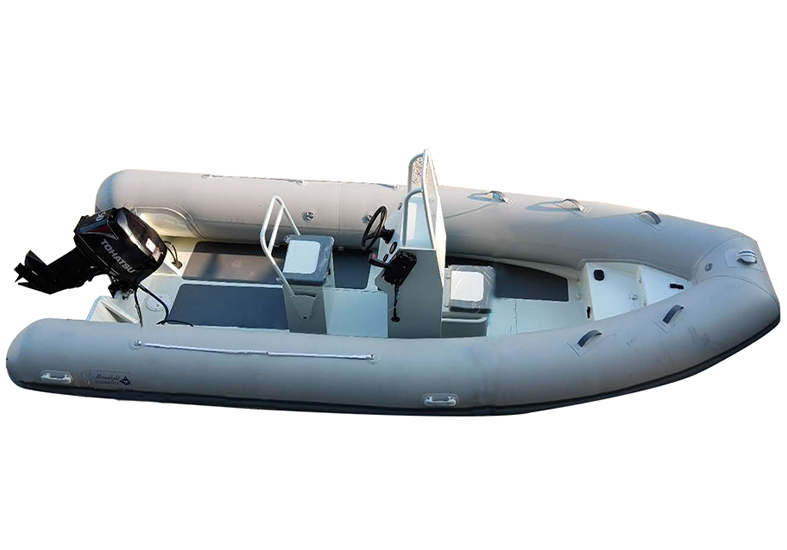
Protect your inflatable from cold, moisture and temperature swings with simple winter care steps. Follow this guide to minimize repairs and have your boat ready for spring.
Why winter care matters
Winter conditions—freezing temperatures, moisture, salt residue and temperature cycling—can damage valves, seams and fabric (PVC / Hypalon). Doing basic maintenance and storage prep now will extend the life of your craft and reduce spring repair costs.
[1]
1. Clean & inspect thoroughly (before storing)
Start with a deep clean to remove salt, sand, algae and bird droppings. Use fresh water and a mild boat cleaner appropriate for your fabric (PVC vs Hypalon). While cleaning, carefully inspect seams, valves, handles and D-rings for wear or small leaks so you can repair them before storage.
Why: Dirt and biological growth accelerate fabric ageing and can cause stains or mildew over winter. Manufacturer maintenance pages recommend washing and drying before storage. [2][3]
2. Repair small leaks and hardware now
Patch punctures and repair seam issues while the boat is clean and dry. Use repair kits and adhesives specified for your material (PVC glue for PVC; neoprene/Hypalon kits where required). Replace corroded fittings and worn straps — a small failure in storage can lead to large damage.
After repairs, re-inflate to operating pressure and check for leaks with a soapy-water test on seams and valve areas.
3. Store inflated or deflated — choose what fits your situation
Two accepted approaches exist: short-term indoor storage partially inflated or long-term deflated and rolled. If you have a dry, ventilated indoor space, storing tubes partially inflated (not over-pressured) helps preserve shape and avoids permanent creasing. If you deflate, follow manufacturer folding instructions and avoid tight creases at the same spot year after year.
- If storing inflated: reduce pressure slightly compared with summer pressure to allow contraction.
- If deflating: clean and fully dry, roll loosely, use breathable bags and avoid sealed plastic that traps moisture.
See manufacturer and RIB storage guides for folding and storage best practices. [4]
4. Protect valves, seams and sun-exposed areas
Ensure valves are clean and dry; apply valve grease if recommended by the maker. Keep tubes out of freezing standing water where trapped moisture can expand and damage chambers. For Hypalon / neoprene fabrics, gentle cleaning and occasional mildew prevention steps help preserve materials. [3]
5. Engine, fuel & electrical winterization (if powered)
If your inflatable uses an outboard, winterize the engine per the manufacturer: flush salt, fog cylinders when recommended, change oil (where applicable), and drain or circulate marine antifreeze in raw-water cooled systems. Stabilize fuel or drain tanks and remove batteries to a warm, dry place on a maintenance charger. These steps prevent freeze damage and internal corrosion. [1][5]
6. Remove electronics & soft gear
Take portable electronics, VHF radios, flares, cushions and lifejackets ashore. Store them in dry, ventilated conditions. Perishables and food should be removed to avoid pests.
7. Choosing a storage location & cover
A garage or climate-controlled unit is best. If only outdoor storage is available, use a fitted breathable cover designed for inflatables and ensure good water runoff. Avoid tightly sealed plastic or metal sheds that cause condensation. Periodic winter checks reduce mildew risk. [4]
8. Checklist before spring
When you bring the boat out of storage, run these steps:
- Inflate to recommended pressure and check all seams/valves for leaks.
- Reinstall battery and test engine; check prop, lower unit oil and cooling.
- Reattach electronics and test communications (VHF, GPS).
- Clean and apply UV protectant or fabric care products if recommended.
Printable Quick Checklist
- Clean & dry hull and tubes
- Repair punctures/seams
- Deflate and roll (or partially inflate for indoor storage)
- Winterize engine, fuel & battery
- Remove electronics, cushions, gear
- Cover with breathable cover
- Check periodically during winter
